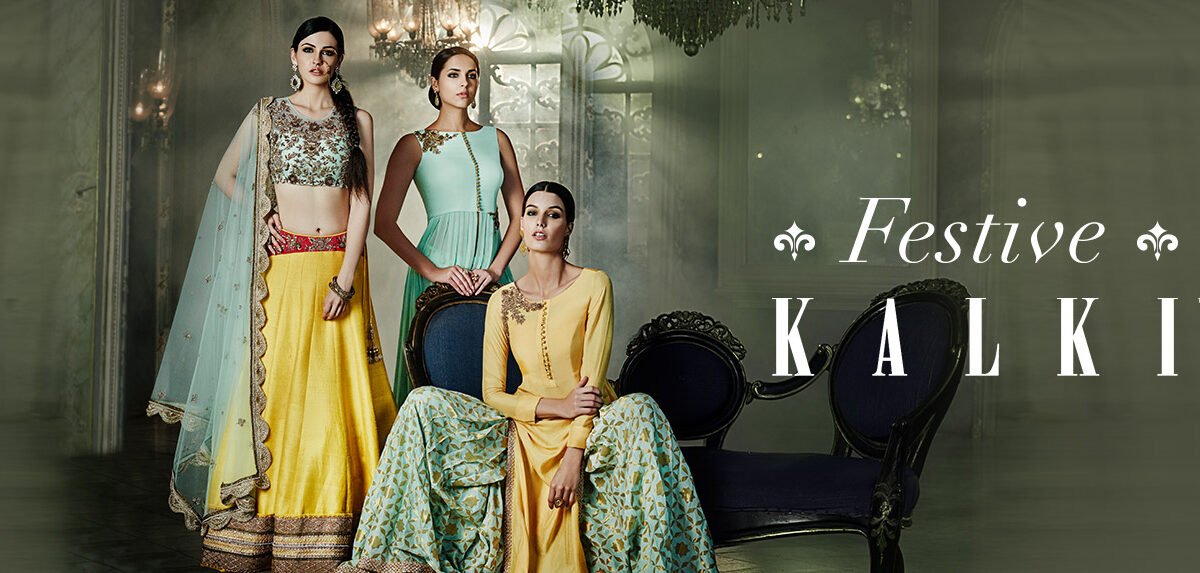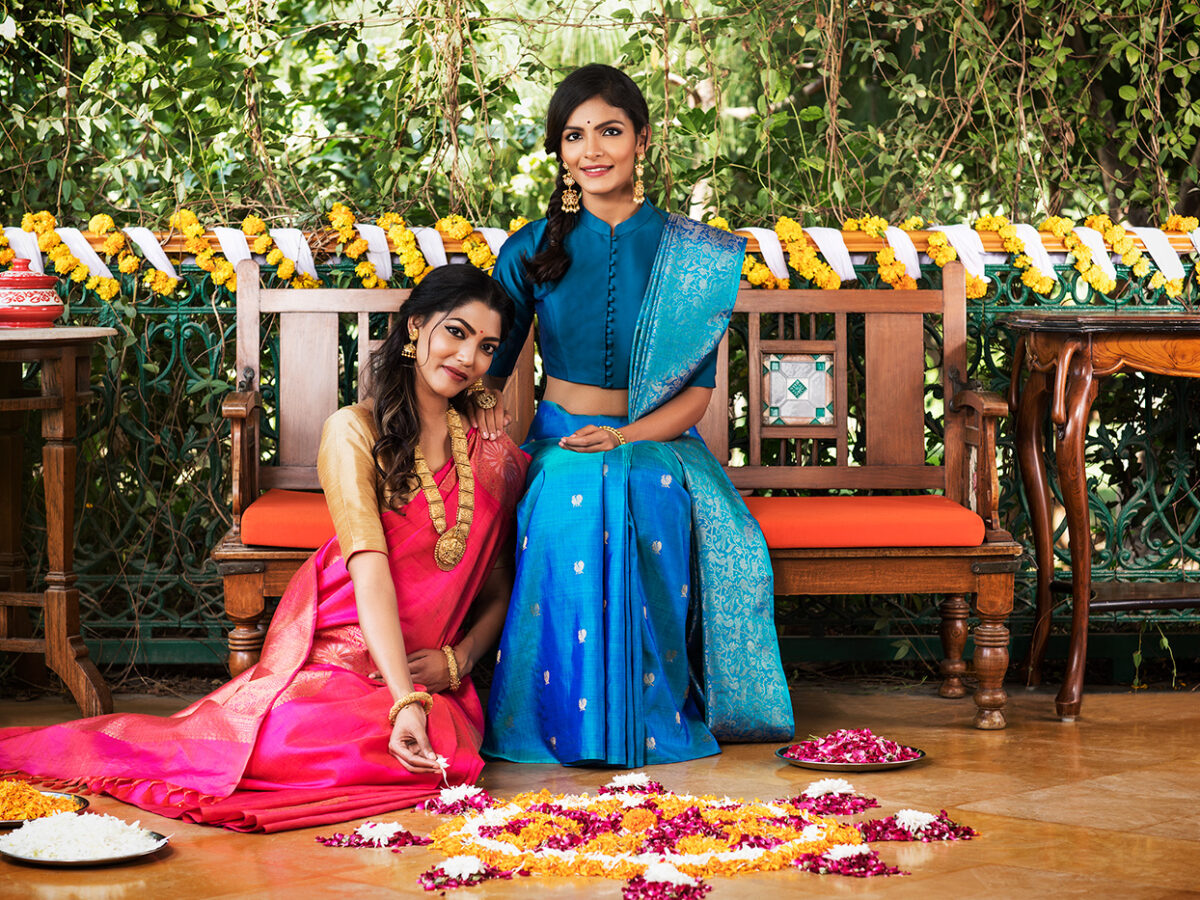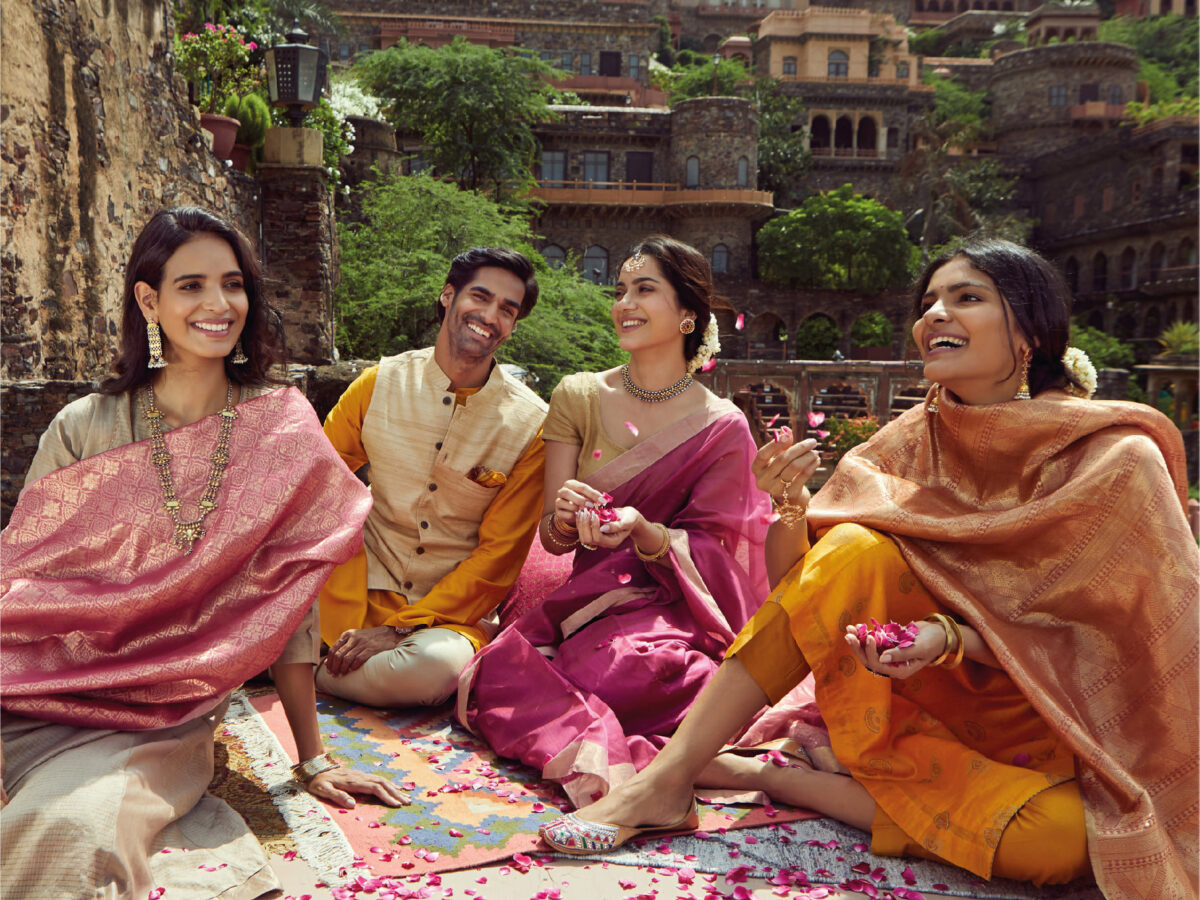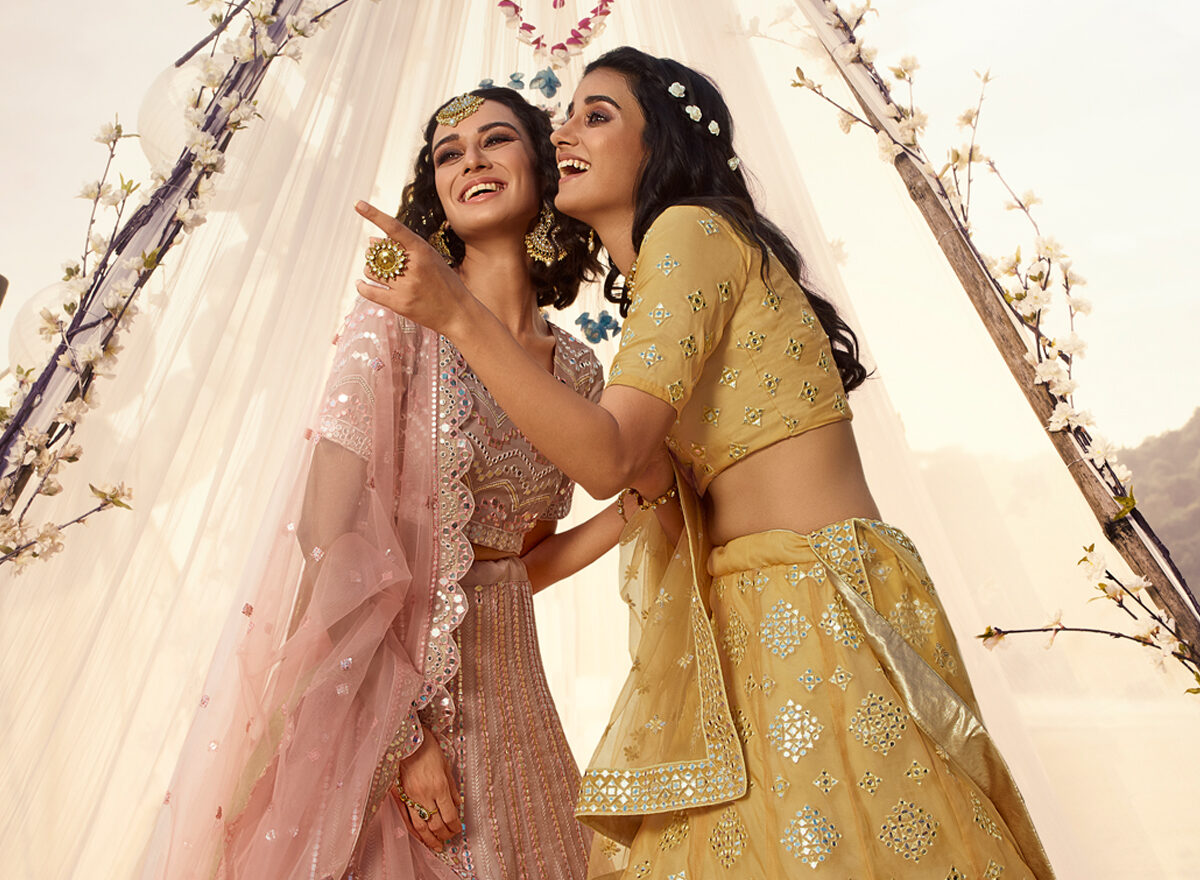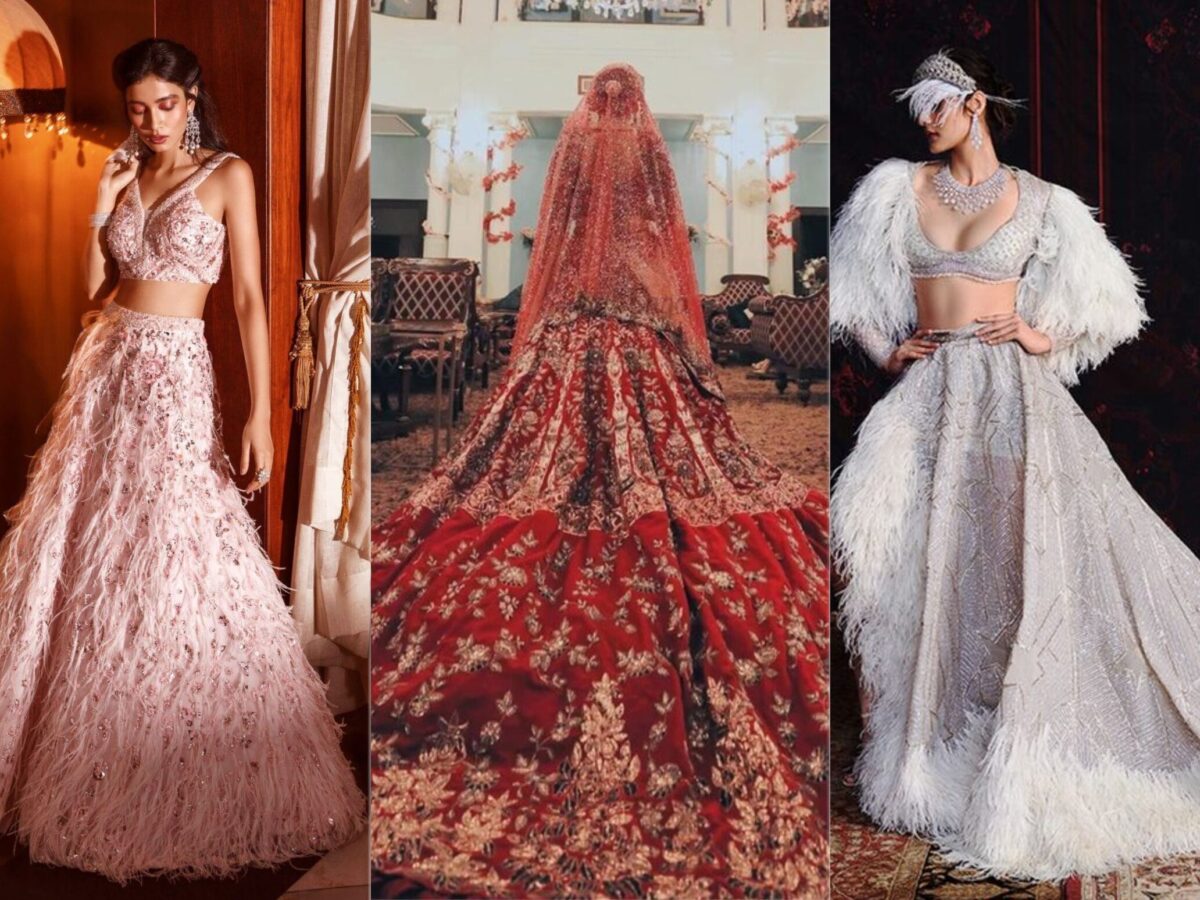Discover the allure of Femella with our review—where chic meets simplicity in elegant fashion. Unveil the exclusive charm of their collection and unlock savings with Femella Coupon Codes. Elevate your style effortlessly.
Category: Women’s Sarees
Ultimate Buying Guide for Women’s Sarees: Top Brands and Budget Options
A saree is a traditional garment worn by women in India, Bangladesh, Nepal, and Sri Lanka. It is a long piece of cloth that is draped around the body in various styles. There are many different types of sarees, each with their own unique characteristics. Some of the most popular types include:
- Banarasi sarees: These sarees are made in the city of Varanasi in India and are known for their rich, intricate designs and heavy work.
- Kanjivaram sarees: These sarees are made in the city of Kanchipuram in India and are known for their vibrant colors and intricate designs.
- Chanderi sarees: These sarees are made in the town of Chanderi in India and are known for their lightweight and sheer fabric.
- Bandhani sarees: These sarees are made by tie-dyeing the fabric in a specific pattern, resulting in a unique and colorful design.
- Cotton sarees: These sarees are made from cotton and are lightweight, breathable, and comfortable to wear.
Here are some factors to consider when buying a saree:
- Fabric: Sarees come in various fabrics, including silk, cotton, chiffon, georgette, and crepe. The fabric you choose will depend on the occasion and your personal preference. Silk sarees are ideal for weddings and formal events, while cotton sarees are suitable for daily wear.
- Design: Sarees come in various designs, including traditional, modern, and fusion. Traditional sarees have classic motifs and designs, while modern sarees have contemporary designs. Fusion sarees combine traditional and modern designs to create a unique look.
- Color: Sarees are available in a wide range of colors, from bright and bold to subtle and subdued. The color you choose will depend on your skin tone and personal preference.
- Length: Sarees are available in different lengths, including 5.5 meters, 6 meters, and 7 meters. The length you choose will depend on your height and how you want to drape the saree.
- Blouse: The blouse is an essential part of the saree, and you can choose from various designs, including traditional, modern, and fusion. The blouse should complement the saree and your body type.
Top Brands for Sarees
There are many brands that specialize in sarees, ranging from high-end luxury brands to more affordable options. Here are some of the top brands for sarees:
| Brand | Description |
|---|---|
| Sabyasachi | Known for his elaborate and luxurious sarees, Sabyasachi is a go-to brand for brides and formal occasions. |
| Manish Malhotra | A popular choice for Bollywood celebrities, Manish Malhotra’s sarees are known for their glamour and sophistication. |
| Raw Mango | Raw Mango’s sarees feature bold, graphic prints and are made from high-quality silk and cotton materials. |
| Anavila | Anavila’s sarees are made from lightweight linen and feature minimalist designs, making them a great option for casual wear. |
| Fabindia | Fabindia is a more affordable brand that offers a wide range of sarees in different materials and styles. |
Budget Options for Sarees
If you’re shopping for sarees on a budget, there are plenty of options available. Here are some budget-friendly brands to consider:
| Brand | Description |
|---|---|
| Biba | Biba offers a range of affordable sarees in different materials and styles, with prices starting at around INR 1000. |
| W for Women | W for Women’s sarees are known for their vibrant colors and trendy designs, with prices starting at around INR 1500. |
| Global Desi | Global Desi’s sarees feature playful prints and bold colors, with prices starting at around INR 2000. |
| Jaipur Kurti | Jaipur Kurti offers a range of budget-friendly sarees in traditional Rajasthani prints, with prices starting at around INR 1000. |
| Shree | Shree’s sarees are made from lightweight materials and feature colorful prints, with prices starting at around INR 1000. |
Saree Showdown: A Comparison of Top Brands for Women’s Sarees
Here’s a product comparison of Women’s Sarees, including features, pricing, and reviews of popular brands:
Sabyasachi Sarees
- Features: Elaborate and luxurious sarees, often embellished with embroidery, sequins, and other decorations.
- Pricing: High-end luxury brand, prices range from INR 50,000 to INR 5,00,000+.
- Reviews: Sabyasachi sarees are often considered to be the epitome of luxury and glamour. Customers praise the high-quality materials and intricate details of the sarees, but note that they come with a hefty price tag.
Raw Mango Sarees
- Features: Bold, graphic prints, made from high-quality silk and cotton materials.
- Pricing: Mid-range brand, prices range from INR 10,000 to INR 50,000+.
- Reviews: Raw Mango sarees are known for their unique designs and high-quality materials. Customers praise the brand’s attention to detail and craftsmanship, but note that the sarees can be expensive.
Fabindia Sarees
- Features: Wide range of sarees in different materials and styles.
- Pricing: Affordable brand, prices range from INR 1,000 to INR 10,000+.
- Reviews: Fabindia sarees are a popular choice for those on a budget. Customers praise the brand’s affordable prices and wide range of options, but note that the quality may not be as high as more expensive brands.
Global Desi Sarees
- Features: Playful prints and bold colors.
- Pricing: Mid-range brand, prices range from INR 2,000 to INR 15,000+.
- Reviews: Global Desi sarees are known for their trendy designs and affordable prices. Customers praise the brand’s vibrant colors and unique prints, but note that the quality may not be as high as more expensive brands.
Biba Sarees
- Features: Affordable sarees in different materials and styles.
- Pricing: Budget-friendly brand, prices range from INR 1,000 to INR 10,000+.
- Reviews: Biba sarees are a popular choice for those on a tight budget. Customers praise the brand’s affordable prices and variety of options, but note that the quality may not be as high as more expensive brands.
Overall, when comparing women’s sarees, it’s important to consider the features, pricing, and reviews of different brands to find the best option for your needs and budget. High-end luxury brands like Sabyasachi are known for their elaborate and luxurious designs, while more affordable brands like Fabindia and Biba offer a wide range of options for those on a budget. Raw Mango and Global Desi fall somewhere in between, offering mid-range prices and unique designs.
Saree Shopping Guide: Find Your Perfect Saree at Every Budget!
Sarees are an iconic Indian garment that have been popular for centuries. They come in a variety of materials, designs, and price ranges. Whether you’re looking for an affordable option or a luxurious high-end brand, there’s a saree for everyone. In this shopping guide, we’ve compiled a list of women’s sarees for every budget. Let’s explore!
High-End Brands
| Brand | Features | Pricing |
|---|---|---|
| Sabyasachi | Elaborate and luxurious sarees, often embellished with embroidery, sequins, and other decorations | INR 50,000 to INR 5,00,000+ |
| Manish Malhotra | Glamorous and sophisticated sarees, popular with Bollywood celebrities | INR 30,000 to INR 2,00,000+ |
| Tarun Tahiliani | Innovative designs, featuring a blend of traditional and modern elements | INR 40,000 to INR 5,00,000+ |
| Anita Dongre | Elegant and feminine sarees, often featuring delicate embroidery and floral prints | INR 20,000 to INR 2,00,000+ |
Mid-Range Brands
| Brand | Features | Pricing |
|---|---|---|
| Raw Mango | Bold, graphic prints, made from high-quality silk and cotton materials | INR 10,000 to INR 50,000+ |
| Anavila | Minimalist designs, made from lightweight linen | INR 10,000 to INR 30,000+ |
| Global Desi | Playful prints and bold colors | INR 2,000 to INR 15,000+ |
| Ritu Kumar | Traditional designs with a contemporary twist, featuring intricate embroidery and embellishments | INR 15,000 to INR 1,00,000+ |
Affordable Brands
| Brand | Features | Pricing |
|---|---|---|
| Biba | Affordable sarees in different materials and styles | INR 1,000 to INR 10,000+ |
| W for Women | Vibrant colors and trendy designs | INR 1,500 to INR 7,000+ |
| Shree | Lightweight materials and colorful prints | INR 1,000 to INR 5,000+ |
| Jaipur Kurti | Traditional Rajasthani prints in a variety of materials | INR 1,000 to INR 5,000+ |
Competitive Landscape Analysis of Women’s Sarees
The market for women’s sarees is highly competitive, with a wide range of brands offering a variety of styles and price points. Some of the major players in the market include Sabyasachi, Raw Mango, Fabindia, Global Desi, Biba, and W for Women. Each of these brands has its own strengths and weaknesses, and their success in the market is influenced by a variety of factors, including brand reputation, product quality, and marketing strategies.
SWOT Analysis of Major Players
Sabyasachi
- Strengths: High brand recognition, luxurious and elaborate designs, popular with brides and formal occasions.
- Weaknesses: High price point may limit accessibility for some customers, limited range of styles may not appeal to all customers.
- Opportunities: Expansion into international markets, collaboration with other brands or designers.
- Threats: Competition from other luxury brands, potential impact of economic downturns on demand.
Raw Mango
- Strengths: Unique and innovative designs, high-quality materials, strong brand reputation among fashion enthusiasts.
- Weaknesses: Higher price point may limit accessibility for some customers, limited range of styles may not appeal to all customers.
- Opportunities: Expansion into international markets, collaboration with other brands or designers, expansion into other product categories.
- Threats: Competition from other mid-range and luxury brands, potential impact of economic downturns on demand.
Fabindia
- Strengths: Affordable prices, wide range of styles and materials, strong brand reputation among value-conscious customers.
- Weaknesses: Lower quality materials may limit appeal to some customers, limited range of styles may not appeal to all customers.
- Opportunities: Expansion into international markets, collaboration with other brands or designers, expansion into other product categories.
- Threats: Competition from other value-focused brands, potential impact of economic downturns on demand.
Global Desi
- Strengths: Trendy designs and colors, affordable prices, wide range of styles and materials.
- Weaknesses: Lower quality materials may limit appeal to some customers, limited range of styles may not appeal to all customers.
- Opportunities: Expansion into international markets, collaboration with other brands or designers, expansion into other product categories.
- Threats: Competition from other value-focused and mid-range brands, potential impact of economic downturns on demand.
Biba
- Strengths: Affordable prices, wide range of styles and materials, strong brand recognition among value-conscious customers.
- Weaknesses: Lower quality materials may limit appeal to some customers, limited range of styles may not appeal to all customers.
- Opportunities: Expansion into international markets, collaboration with other brands or designers, expansion into other product categories.
- Threats: Competition from other value-focused brands, potential impact of economic downturns on demand.
W for Women
- Strengths: Vibrant colors and trendy designs, affordable prices, wide range of styles and materials.
- Weaknesses: Lower quality materials may limit appeal to some customers, limited range of styles may not appeal to all customers.
- Opportunities: Expansion into international markets, collaboration with other brands or designers, expansion into other product categories.
- Threats: Competition from other value-focused and mid-range brands, potential impact of economic downturns on demand.
Trends and Innovations in the Women’s Sarees Market: What’s New?
The women’s sarees market is constantly evolving, with new trends and innovations emerging every season. In this overview, we will explore the latest trends and innovations that are shaping the sarees market today.
- Sustainable Materials: Many brands are now using sustainable materials in the production of their sarees. This includes eco-friendly fabrics like organic cotton, bamboo, and recycled polyester, as well as natural dyes and other sustainable production methods.
- Fusion Styles: There is a growing trend towards fusion styles, which combine traditional Indian design elements with modern Western styles. This includes sarees with contemporary prints, cuts, and embellishments, as well as sarees that incorporate non-traditional fabrics like denim and leather.
- Digital Prints: Digital printing technology has made it easier and more affordable to create complex and intricate designs on sarees. This has led to a growing trend towards sarees with bold and colorful digital prints, often inspired by nature, art, and other cultural influences.
- Minimalist Designs: While traditional Indian sarees are often characterized by bold colors and intricate designs, there is a growing trend towards more minimalist and understated styles. This includes sarees with simple prints and solid colors, as well as sarees with subtle embellishments like delicate embroidery and lacework.
- Customization: Many brands are now offering customization options for sarees, allowing customers to choose the fabric, design, and embellishments of their saree. This trend has been driven by a growing demand for personalized and unique fashion items, as well as the increasing availability of online shopping and customization tools.
Saree Shopping Guide: Sarees for Every Age and Preference
Sarees are a versatile garment that can be worn by women of all ages and preferences. Whether you’re looking for a saree for your little girl or your grandmother, there’s a saree for everyone. In this shopping guide, we’ve compiled a list of women’s sarees for different age groups and preferences.
Sarees for Young Women
| Style | Features |
|---|---|
| Floral Print Sarees | Vibrant colors, playful prints, lightweight materials |
| Georgette Sarees | Trendy designs, flowy material, minimal embellishments |
| Ruffle Sarees | Bold colors, dramatic ruffles, statement piece |
| Pre-Draped Sarees | Modern designs, easy to wear, bold colors |
Sarees for Middle-Aged Women
| Style | Features |
|---|---|
| Silk Sarees | Traditional designs, rich colors, intricate embellishments |
| Cotton Sarees | Comfortable material, breathable, minimalist designs |
| Linen Sarees | Lightweight material, elegant designs, natural fibers |
| Handloom Sarees | Unique designs, artisanal craftsmanship, sustainable materials |
Sarees for Senior Women
| Style | Features |
|---|---|
| Kanjivaram Sarees | Traditional designs, intricate silk weaving, timeless elegance |
| Chiffon Sarees | Lightweight material, minimal embellishments, elegant draping |
| Banarasi Sarees | Intricate brocade work, rich colors, timeless beauty |
| Bandhani Sarees | Bright colors, intricate tie-dye patterns, traditional Rajasthani style |
It’s important to note that these sarees can be worn by anyone regardless of age, and that personal preference and body type should also be considered when selecting a saree. These are just some ideas and suggestions based on common preferences among different age groups.
Expert Reviews and Ratings to Help Customers Choose the Best Women’s Saree
- Consider the Occasion: Different sarees are suitable for different occasions. For formal events, opt for rich and heavy sarees with intricate work, while lighter sarees with subtle designs are perfect for casual outings.
- Pay Attention to the Material: The quality of the material can greatly impact the look and feel of the saree. High-quality silk or cotton sarees can drape beautifully and feel comfortable to wear, while cheaper synthetic materials may not drape as well or feel as comfortable.
- Look for Unique Designs: Unique designs and patterns can add a touch of personality and style to your saree. Consider sarees with bold prints, intricate embroidery work, or modern twists on traditional designs.
- Check for Quality: Ensure that the saree is of good quality and will last long. Check the stitching, hemming, and other details to make sure that it is well-made and durable.
- Read Reviews: Check for reviews and ratings from other customers before making a purchase. This can provide valuable insights into the quality, fit, and overall experience of wearing the saree.
- Try Before You Buy: If possible, try on the saree before making a purchase to ensure that it fits well and looks good on you.
By following these tips, you can make an informed decision when choosing the best saree for your needs and preferences.
How Can Companies Make their Women’s Sarees Environmentally Friendly and Socially Responsible
Companies can make their Women’s Sarees environmentally friendly and socially responsible in a number of ways. Here are some strategies that can be used to promote sustainability and corporate social responsibility in the saree industry:
- Use Sustainable Materials: Companies can use sustainable materials in the production of their sarees. This includes eco-friendly fabrics like organic cotton, bamboo, and recycled polyester, as well as natural dyes and other sustainable production methods.
- Reduce Waste: Companies can reduce waste by implementing sustainable practices like recycling, composting, and upcycling. They can also reduce the amount of packaging and other materials used in the production and distribution of sarees.
- Promote Fair Labor Practices: Companies can promote fair labor practices by ensuring that workers are paid fairly, treated with respect, and provided with safe working conditions. They can also support worker empowerment and collective bargaining efforts.
- Support Local Communities: Companies can support local communities by sourcing materials and labor locally, promoting local cultural traditions, and giving back to the community through charitable giving and other initiatives.
- Implement Ethical Business Practices: Companies can implement ethical business practices by promoting transparency, accountability, and responsible governance. They can also engage in ethical marketing practices, such as avoiding greenwashing and promoting truth in advertising.
Factors that Consumers Should Consider Before Buying Women’s Sarees
Women’s sarees are a traditional Indian garment that is popular for weddings, festivals, and other formal occasions. When buying sarees, it’s important to consider a variety of factors, such as the occasion, personal style, body type, and budget. Additionally, there are many different types of sarees available, each with its own unique features and characteristics. To help guide your purchasing decision, here are some factors to consider when buying women’s sarees:
Material
| Material | Features |
|---|---|
| Silk | Soft, luxurious, and drapes beautifully. Can be expensive. |
| Cotton | Lightweight, comfortable, and easy to care for. Ideal for hot climates. |
| Georgette | Lightweight and flowing, with a slightly crinkled texture. Often used for printed sarees. |
| Chiffon | Soft and lightweight, with a sheer appearance. Often used for evening wear. |
| Linen | Lightweight and breathable, with a textured appearance. Ideal for casual wear. |
Design
| Design | Features |
|---|---|
| Printed | Features bold and colorful prints and patterns. Ideal for casual wear. |
| Embroidered | Features intricate embroidery work, often in thread or sequins. Ideal for formal occasions. |
| Plain | Features a solid color or simple design. Ideal for versatile wear. |
| Contemporary | Features modern and innovative designs, often with a fusion of traditional and modern elements. Ideal for trendsetters. |
Occasion
| Occasion | Features |
|---|---|
| Casual | Features lightweight and comfortable materials, often with colorful prints and patterns. Ideal for everyday wear. |
| Formal | Features rich and luxurious materials, often with intricate embroidery or embellishments. Ideal for weddings and other formal events. |
| Party | Features bold and trendy designs, often with sequins or other embellishments. Ideal for parties and special occasions. |
| Traditional | Features classic and timeless designs, often with traditional motifs and patterns. Ideal for cultural events and festivals. |
Body Type
| Body Type | Features |
|---|---|
| Hourglass | Sarees with a fitted bodice and flowing skirt can accentuate curves. |
| Rectangle | Sarees with pleats or ruffles at the waist can create the illusion of curves. |
| Apple | Sarees with a higher waistline can create the illusion of a slimmer waist. |
| Pear | Sarees with a wider border or embellishments at the bottom can balance out wider hips. |
When choosing a Women’s Saree, consumers should consider their personal style, body type, and the occasion for which the saree will be worn. It’s important to choose a saree made from high-quality materials, with a design that fits the occasion and personal preferences. Additionally, it’s important to consider how the saree will drape and fit the body, and choose a style that flatters the individual’s body type. By considering these factors, consumers can make an informed decision when choosing the right saree for their needs and preferences.
Market Dynamics of Women’s Sarees: Emerging Trends, Key Players, and Growth Prospects
While the saree market is highly competitive, there are a number of growth opportunities in the industry. Increasing demand from international markets, the rising popularity of fusion styles, and the growing focus on sustainability and ethical business practices are all factors that are driving growth in the market. As such, companies that are able to adapt to changing consumer preferences and embrace sustainable and socially responsible practices are well-positioned for success in the saree industry.
Here is an explanation of the market dynamics of Women’s Sarees, including emerging trends, key players, and growth prospects:
Market Overview
The market for Women’s Sarees is highly competitive and diverse, with a wide range of brands offering a variety of styles and price points. The saree industry is driven by a strong demand for traditional clothing, as well as emerging trends towards fusion styles, sustainable materials, and customization options. The market is expected to continue to grow in the coming years, driven by increasing disposable incomes, changing fashion preferences, and the growing popularity of online shopping.
Key Players
The saree industry is dominated by a few key players, including Sabyasachi, Raw Mango, Fabindia, Global Desi, Biba, and W for Women. These brands are known for their high-quality materials, intricate designs, and innovative styles. However, the market is also home to many smaller, independent brands that cater to niche markets and offer unique and personalized products.
Emerging Trends
The saree industry is constantly evolving, with emerging trends that reflect changing consumer preferences and technological advancements. Some of the emerging trends in the saree market include:
- Fusion Styles: There is a growing trend towards fusion styles, which combine traditional Indian design elements with modern Western styles. This includes sarees with contemporary prints, cuts, and embellishments, as well as sarees that incorporate non-traditional fabrics like denim and leather.
- Sustainable Materials: Many brands are now using sustainable materials in the production of their sarees. This includes eco-friendly fabrics like organic cotton, bamboo, and recycled polyester, as well as natural dyes and other sustainable production methods.
- Customization: Many brands are now offering customization options for sarees, allowing customers to choose the fabric, design, and embellishments of their saree. This trend has been driven by a growing demand for personalized and unique fashion items, as well as the increasing availability of online shopping and customization tools.
Growth Prospects
The market for Women’s Sarees is expected to continue to grow in the coming years, driven by increasing disposable incomes, changing fashion preferences, and the growing popularity of online shopping. The saree industry is also expected to benefit from the rising demand for sustainable and ethically-produced clothing, as well as the trend towards fusion styles and customization options. Additionally, the growing popularity of social media and digital marketing is expected to drive further growth in the saree industry, as brands continue to use these platforms to reach new customers and showcase their products.
Consumer Behavior and Buying Patterns for Women’s Sarees: Insights from Research
The women’s saree market is a significant contributor to the Indian textile industry, with a wide range of players offering various designs, materials, and price ranges. In this analysis, we will explore the consumer behavior and buying patterns for women’s sarees based on research insights.
- Brand Consciousness: Many consumers are brand conscious when it comes to purchasing sarees. They often prefer to buy from well-known and reputable brands, as they believe that these brands offer higher quality and better value for money.
- Style and Design Preferences: Consumers often have specific style and design preferences when it comes to sarees. This includes the type of fabric, color, print, and embroidery work. Consumers often seek out sarees that reflect their personal style and taste.
- Occasion-Based Purchases: Many consumers purchase sarees based on the occasion or event that they will be attending. For example, sarees for weddings and other formal events tend to be more elaborate and heavily embellished, while sarees for casual wear are often lighter and more comfortable.
- Influence of Family and Friends: Family and friends often have a significant influence on saree purchasing decisions. Many consumers seek the opinions and recommendations of their loved ones when making a purchase.
- Online Shopping: The popularity of online shopping has grown significantly in recent years, and many consumers now prefer to shop for sarees online. Online shopping offers a wider range of options, competitive pricing, and the convenience of shopping from home.
- Price Sensitivity: Price sensitivity is a major factor for many consumers when purchasing sarees. Consumers often seek out high-quality sarees that offer good value for money, and may compare prices across different brands and retailers before making a purchase.
Overall, consumer behavior and buying patterns for Women’s Sarees are influenced by a variety of factors, including brand consciousness, style and design preferences, occasion-based purchases, the influence of family and friends, online shopping, and price sensitivity. By understanding these factors, brands and retailers can better cater to the needs and preferences of their customers, and provide a more positive shopping experience.
Impact of Technological Advancements on Women’s Sarees
Technological advancements have had a significant impact on Women’s Sarees, transforming the way sarees are designed, produced, and sold. Here are some ways in which technology has impacted the saree industry:
Design and Production
- Computer-Aided Design (CAD): Computer-aided design (CAD) has revolutionized the way sarees are designed. Designers can now create digital designs and patterns that can be easily modified and customized, allowing for greater flexibility and creativity in the design process.
- Digital Printing: Digital printing technology has made it possible to print complex and intricate designs directly onto saree fabrics. This has allowed for greater precision and detail in the printing process, as well as greater efficiency and reduced waste in the production process.
- Automation: Automation has played a significant role in the production of sarees, allowing for greater speed and efficiency in the manufacturing process. Automated weaving machines, embroidery machines, and cutting machines have all helped to streamline the production of sarees and reduce labor costs.
Marketing and Sales
- E-commerce: The rise of e-commerce has transformed the way sarees are sold. Consumers can now shop for sarees online, comparing prices and styles across multiple brands and retailers. This has made it easier for consumers to find the sarees that best fit their needs and preferences.
- Social Media: Social media has become a powerful marketing tool for saree brands, allowing them to reach a wider audience and showcase their products in creative and engaging ways. Instagram, in particular, has become a popular platform for saree brands to showcase their designs and connect with customers.
- Virtual Try-On: Virtual try-on technology has made it possible for customers to try on sarees virtually, using augmented reality and 3D modeling technology. This has helped to improve the online shopping experience for customers, allowing them to better visualize how a saree will look and fit before making a purchase.
Overall, technological advancements have had a significant impact on Women’s Sarees, transforming the way sarees are designed, produced, marketed, and sold. These advancements have helped to improve the efficiency, quality, and creativity of the saree industry, while also enhancing the shopping experience for customers.
An Overview of Global Trade Dynamics for Women’s Sarees
The global trade in Women’s Sarees is significant, with a large number of countries importing and exporting these garments. The following tables provide an overview of import-export trends for Women’s Sarees.
Top Importing Countries
| Country | Imports (USD Millions) | % of Total Imports |
|---|---|---|
| USA | 235.6 | 25.7% |
| UAE | 71.9 | 7.9% |
| UK | 63.4 | 6.9% |
| Saudi Arabia | 61.9 | 6.8% |
| Sri Lanka | 58.6 | 6.4% |
| Singapore | 46.8 | 5.1% |
| Canada | 41.6 | 4.5% |
| South Africa | 36.4 | 4.0% |
| Germany | 31.7 | 3.5% |
| Australia | 28.6 | 3.1% |
Top Exporting Countries
| Country | Exports (USD Millions) | % of Total Exports |
|---|---|---|
| India | 1,582.8 | 71.7% |
| China | 244.5 | 11.1% |
| Bangladesh | 99.1 | 4.5% |
| Vietnam | 41.5 | 1.9% |
| Thailand | 36.5 | 1.7% |
| Pakistan | 31.4 | 1.4% |
| Nepal | 23.9 | 1.1% |
| United Arab Emirates | 22.1 | 1.0% |
| Indonesia | 18.4 | 0.8% |
| Malaysia | 16.4 | 0.7% |
Trade Policies
Trade policies can have a significant impact on the global trade in Women’s Sarees. Here is an overview of some of the key trade policies that impact the saree industry:
- Tariffs: Tariffs can impact the cost of importing and exporting sarees. Some countries impose tariffs on imported sarees, while others offer preferential tariffs to encourage trade.
- Free Trade Agreements (FTAs): FTAs can reduce or eliminate tariffs on saree imports and exports between participating countries. For example, the ASEAN-India FTA has reduced tariffs on sarees between ASEAN member countries and India.
- Rules of Origin: Rules of origin determine whether a product is eligible for preferential tariffs under an FTA. This can impact the eligibility of sarees for preferential tariffs, depending on the country of origin and the specific FTA.
- Non-Tariff Barriers: Non-tariff barriers, such as product standards and regulations, can impact the import and export of sarees. For example, some countries have regulations on the use of certain dyes or chemicals in the production of textiles.
Overall, trade policies can have a significant impact on the global trade in Women’s Sarees. By understanding these policies and their implications, saree manufacturers and exporters can better navigate the global trade landscape and take advantage of opportunities for growth and expansion.
Innovations and Research in Women’s Sarees: Latest Discoveries and Breakthroughs
The women’s saree market is constantly evolving, with new innovations and breakthroughs emerging every year. In this analysis, we will explore the latest discoveries and breakthroughs in women’s sarees.
- Smart Sarees: Researchers are working on developing smart sarees that can monitor a wearer’s health and wellbeing. These sarees will be embedded with sensors and other technologies that can track things like heart rate, blood pressure, and respiration, providing valuable health data in real-time.
- Biodegradable Sarees: In response to growing concerns about sustainability, some saree manufacturers are developing biodegradable sarees that can break down naturally over time. These sarees are made from eco-friendly materials like bamboo and organic cotton, and use natural dyes and other sustainable production methods.
- 3D Printing: Some saree designers are experimenting with 3D printing technology to create unique and innovative saree designs. 3D printing allows for greater precision and detail in the design process, and can be used to create complex and intricate patterns that would be difficult to achieve through traditional methods.
- Virtual Reality (VR): Some saree brands are using virtual reality technology to create immersive and interactive shopping experiences for customers. VR allows customers to try on sarees virtually and see how they will look in different settings, making it easier to make a purchase decision.
- Natural Dyeing: Natural dyeing is becoming more popular in the saree industry, as consumers become more aware of the environmental impact of synthetic dyes. Natural dyes are derived from plants, minerals, and other natural sources, and are considered to be more sustainable and eco-friendly than synthetic dyes.
Overall, these innovations and research in Women’s Sarees reflect a growing interest in sustainability, technology, and customization in the saree industry. By incorporating these innovations and research findings into their designs and production methods, saree manufacturers can create products that are more eco-friendly, innovative, and customer-focused.
How Companies Approach the Development of Women’s Sarees
Companies approach the development of Women’s Sarees through a structured process that involves several stages, from ideation to prototyping and commercialization. Here is an overview of how companies approach the development of Women’s Sarees:
Ideation
The ideation stage involves generating ideas and concepts for new saree designs. This may involve brainstorming sessions, market research, and trend analysis to identify emerging styles and consumer preferences. Designers may also take inspiration from traditional motifs, historical trends, and cultural influences.
Design and Development
Once the ideas are generated, the next step is to create the design and develop a prototype. Designers use computer-aided design (CAD) software to create digital designs and patterns, which can be modified and customized as needed. They also work closely with the production team to select fabrics, trims, and embellishments.
Prototyping
After the design is finalized, the next step is to create a prototype. This involves creating a sample saree that can be used to test the design, fit, and comfort. The prototype may go through several iterations and modifications before it is finalized.
Production and Commercialization
Once the prototype is approved, the saree can go into production. The production process involves cutting and sewing the fabric, adding trims and embellishments, and quality control checks to ensure that the saree meets the desired specifications. Once the sarees are produced, they are marketed and sold through various channels, such as online stores, physical retail stores, and wholesalers.
Commercialization Strategies
To commercialize Women’s Sarees, companies use various strategies to reach their target customers and promote their products. These strategies include:
- Marketing and Advertising: Companies use various marketing and advertising strategies to create brand awareness and promote their products. This may include social media marketing, influencer marketing, and traditional advertising methods.
- Customization: Many companies offer customization options for sarees, allowing customers to select the fabric, design, and embellishments according to their preferences. This helps to create a personalized and unique product that meets the customer’s needs.
- E-commerce: Many companies now sell sarees through online stores, which offer greater convenience and accessibility for customers. E-commerce also allows companies to reach a wider audience and reduce costs associated with physical retail stores.
- Sustainability: Companies are increasingly incorporating sustainable and eco-friendly materials and production methods in their saree production. This helps to meet the growing demand for sustainable products and can also help to differentiate the brand from competitors.
Overall, the development of Women’s Sarees involves a structured process that involves ideation, design and development, prototyping, production, and commercialization strategies. By following this process and incorporating innovative and customer-focused strategies, companies can create high-quality sarees that meet the needs and preferences of their target customers.
AliExpress Promo Codes for October: Get Discounts Now
By Sneha, Your Trusted Journalist I am going on a journey to unravel the exciting world of October discounts at AliExpress. In this exploration, I am set to navigate through the vast realm of savings that AliExpress is generously offering this month. It’s a journey filled with surprises and great deals, and I’m excited to […]
Unveiling the Epitome of Style: A Personal Review of Kalki Fashion’s Exquisite Collection
Step into the captivating realm of Kalki Fashion, where timeless elegance meets contemporary allure. As I embark on this exhilarating journey of exploring their vast collection, I am immediately enthralled by the sheer beauty and diversity of their offerings. From traditional ensembles that pay homage to India’s rich heritage to modern creations that exude sophistication, […]
Exquisite Symphony: A Comprehensive Personal Review of India’s Finest Saree Brands
As I embarked on my quest to explore the world of sarees, I found myself captivated by the tapestry of tradition and modernity that India’s top saree brands have to offer. The elegance and grace exuded by this iconic Indian garment have made it a timeless classic, adorning women of all ages and body types. […]
FabIndia Review: A Year of Ethical Elegance and Sustainable Style
In a world driven by mass production and fast fashion, there is a growing desire to seek out products that are unique, sustainable, and culturally rich. It is within this context that FabIndia emerges as a beacon of authenticity and conscious consumerism. As I embarked on my journey to explore the realm of ethically sourced […]
Review It In Style: Unveiling Cbazaar’s Exquisite Ethnic Fashion Collection
Embarking on a journey to explore the world of ethnic and traditional fashion, I stumbled upon Cbazaar—an online treasure trove of vibrant colors, intricate designs, and exquisite craftsmanship. Over the course of a year, my husband and I delved into the realm of Cbazaar, discovering a plethora of clothing options that fulfilled our desires for […]
Embarking on a Shopclues Journey: My Personal Review of Products, Services, and More
In today’s digital age, online shopping has become an integral part of our lives. With a plethora of e-commerce platforms available, it can be overwhelming to choose the right one. As an avid online shopper, I have always been on the lookout for reliable platforms that offer a wide range of products at affordable prices. […]
Transforming My Wardrobe: A Comprehensive Review of My 6-Month Experience with Yepme Products
Fashion and clothing have always been a way for people to express themselves and make a statement. With the ever-changing trends and styles, it can be challenging to keep up with what’s in vogue. This is where online fashion stores like Yepme come in, offering an extensive range of trendy and affordable clothing options for […]
Dressed to Impress: How to Choose the Perfect Engagement Dress for Your Budget and Style
Congratulations on your engagement! One of the most exciting things about being a bride-to-be is choosing the perfect engagement dress. It’s a once-in-a-lifetime opportunity to feel like a princess and make a statement on your big day. But with so many options available in India, finding the right engagement dress can be overwhelming. That’s why […]


